High-Performance Cold Storage Roof Design
Steel Deck considerations
Special attention should be paid to steel roof decks, which are used in many cold storage buildings.
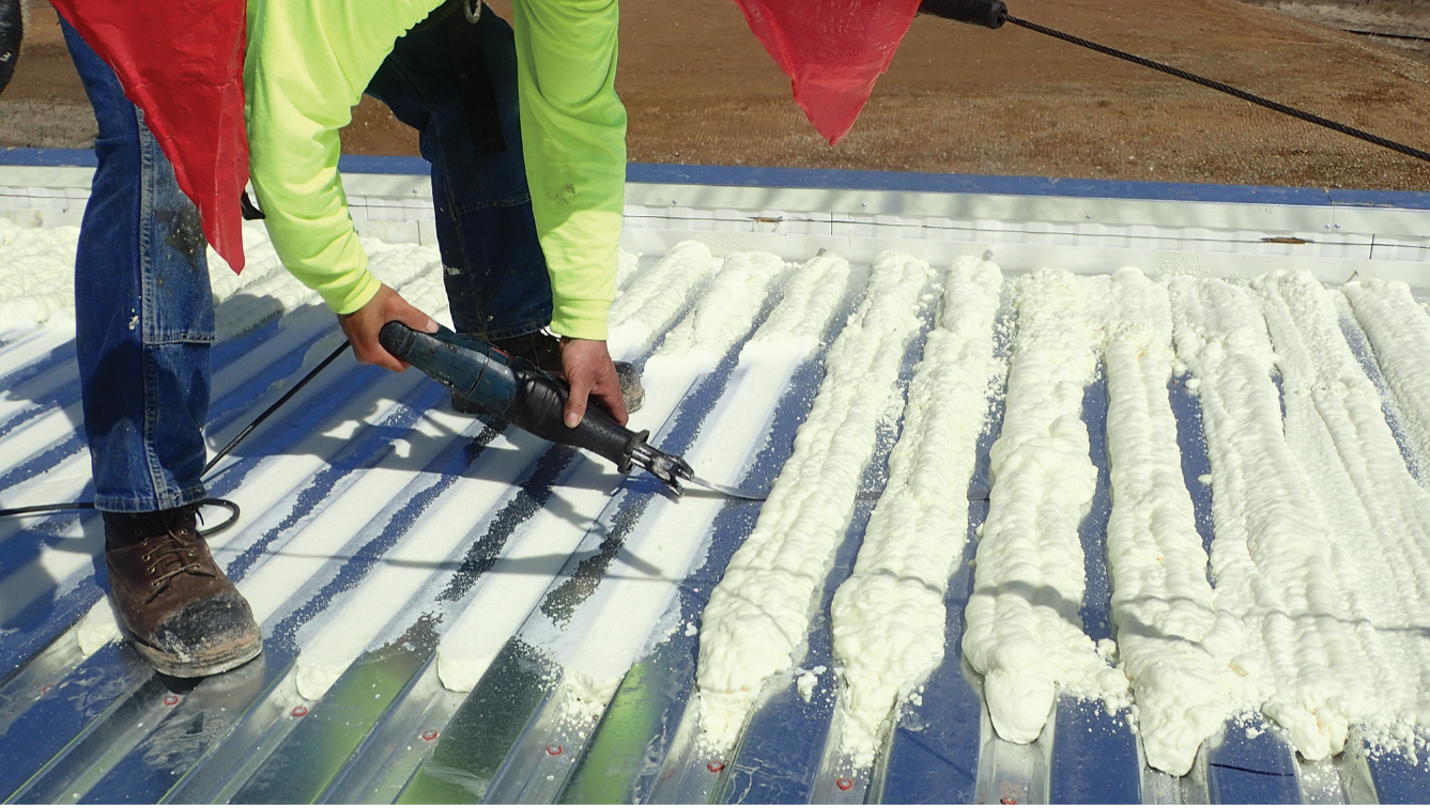
Image courtesy of Matt Dupuis
To prevent steel deck flutes acting as a path for air, flutes should be filled with closed-cell spray polyurethane foam.
Steel decks pose a particularly difficult detailing issue in regard to air control since they are challenging to air seal at walls and penetrations. Steel decks with flutes can serve as pathways through for the cold interior air to meet with the warm exterior air that enters into the roofing assembly via poorly detailed penetrations and wall intersections. To minimize airflow and create an air seal, steel deck flutes should be filled with closed-cell spray polyurethane foam (SPF) at exterior walls, interior walls that separate different interior climates such as dry storage and a deep freezer, and penetration locations.
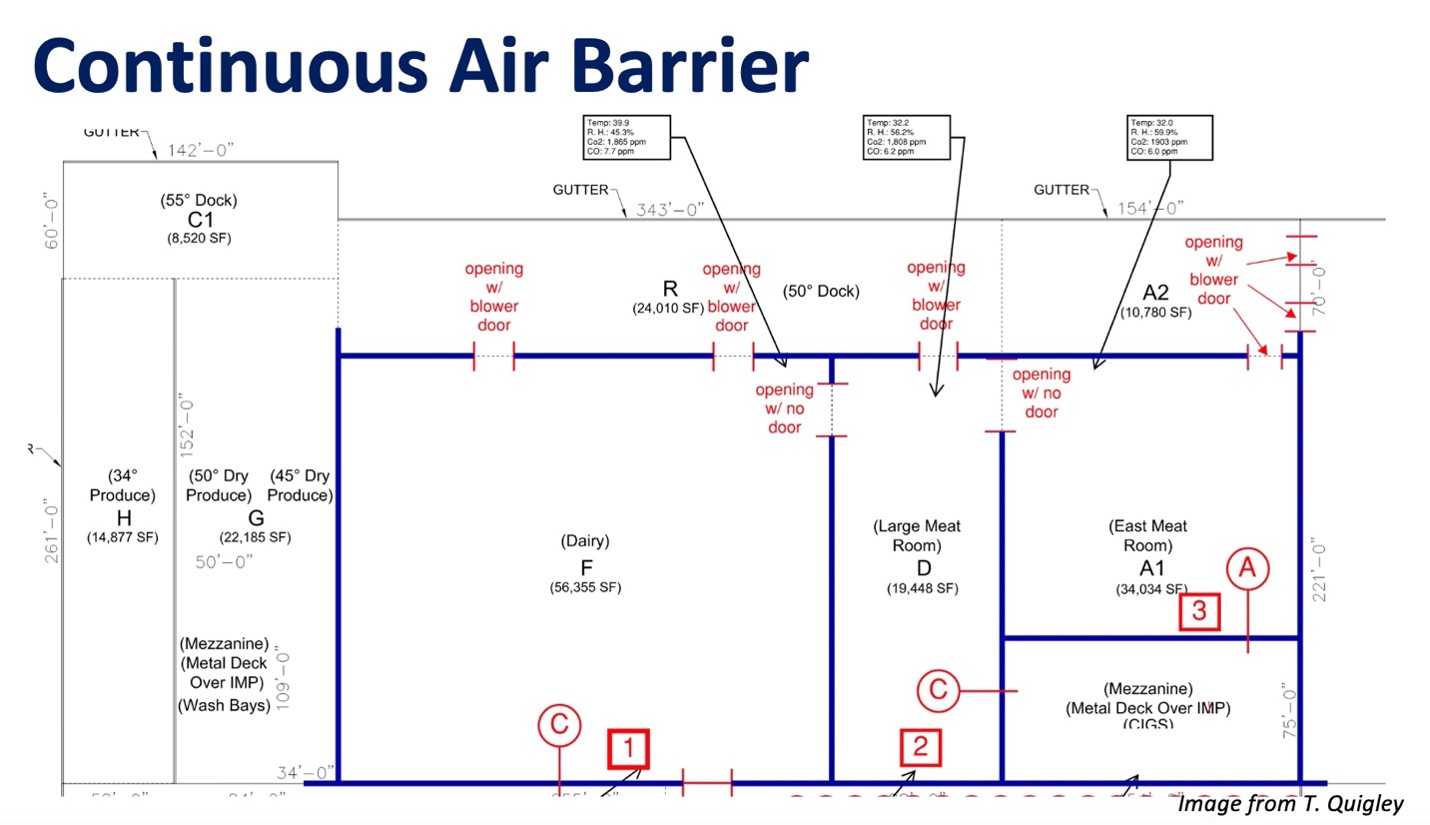
Closed-cell spray polyurethane foam should also be used at transitions at interior walls that separate different interior temperature conditions.
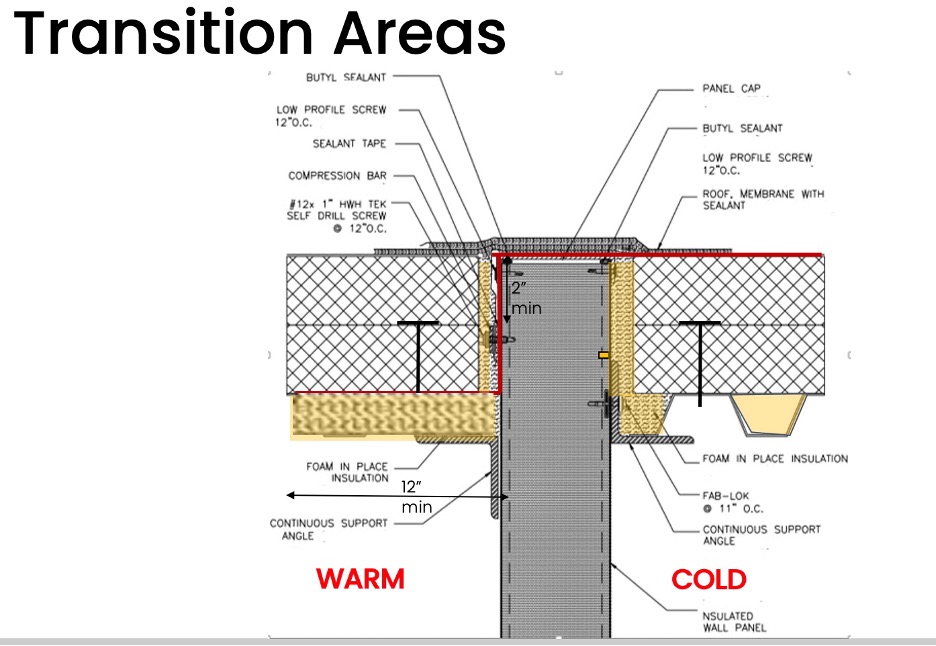
Transition area detail.
At wall to roof deck intersections, SPF should be placed in deck flutes, regardless of the direction the flutes are running in respect to the wall, a minimum of 12 inches measured from the wall. A similar rule of thumb applies to penetrations, where the surrounding deck flutes should be filled a minimum of 12 inches around the penetration. The SPF should be allowed to rise and then cut flush with the surrounding deck flutes so that the insulation boards will sit flat above the SPF.
Separation of Interior Spaces
Frequently, cold storage buildings feature different conditioned spaces or rooms within a single facility. Offices, loading docks, and even rooms with varying cooled temperatures such as blast freezers and coolers are often part of a cold storage building. Particularly, spaces with large temperature differentials should be separated not only internally, but at the roof level to prevent air movement from space to space. An approach to accomplish this separation of space utilizes the roof membrane to create a separation at the roof level. The membrane can be turned down between the insulation for each room and adhered to the deck. If a steel deck is used, the flutes should be filled with spray foam insulation to further prevent airflow between the deck flutes.
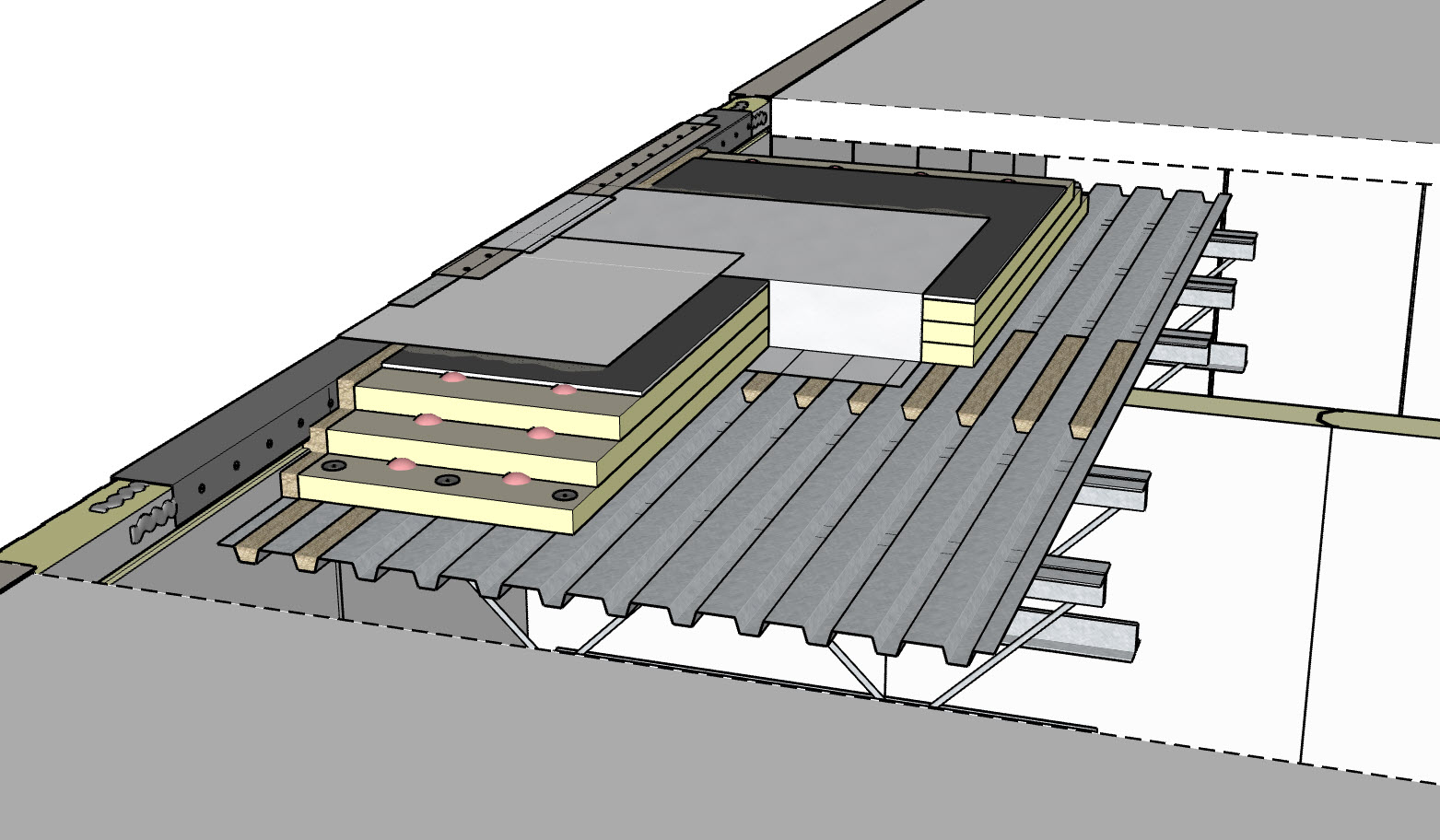
Accomplish the separation of spaces by utilizing the roof membrane to create a separation at the roof level.
Insulated Metal Panel considerations
Insulated Metal Panels (IMPs) are a common exterior wall assembly used in construction of cold storage facilities. In this type of construction, the connection between the roof assembly and the IMPs are a crucial interface. To complicate this interface, IMPs are often corrugated, which makes terminating flat roofing materials to the surface difficult, which is required to create an airtight seal. On the interior side of the roof, air seals are needed between the face of the IMP and the edge of the insulation boards. This is a critical location for air leaks and condensation potential as this provides direct access to the cooled interior of the building. The most effective way to air seal at this location is to use closed-cell spray foam at the intersection. Prior to installation of the spray foam, a thermal break, or kerf, should be cut into the face of the metal panel to expose the foam core of the panel. (See the IMP manufacturer for details on how to cut in this kerf).
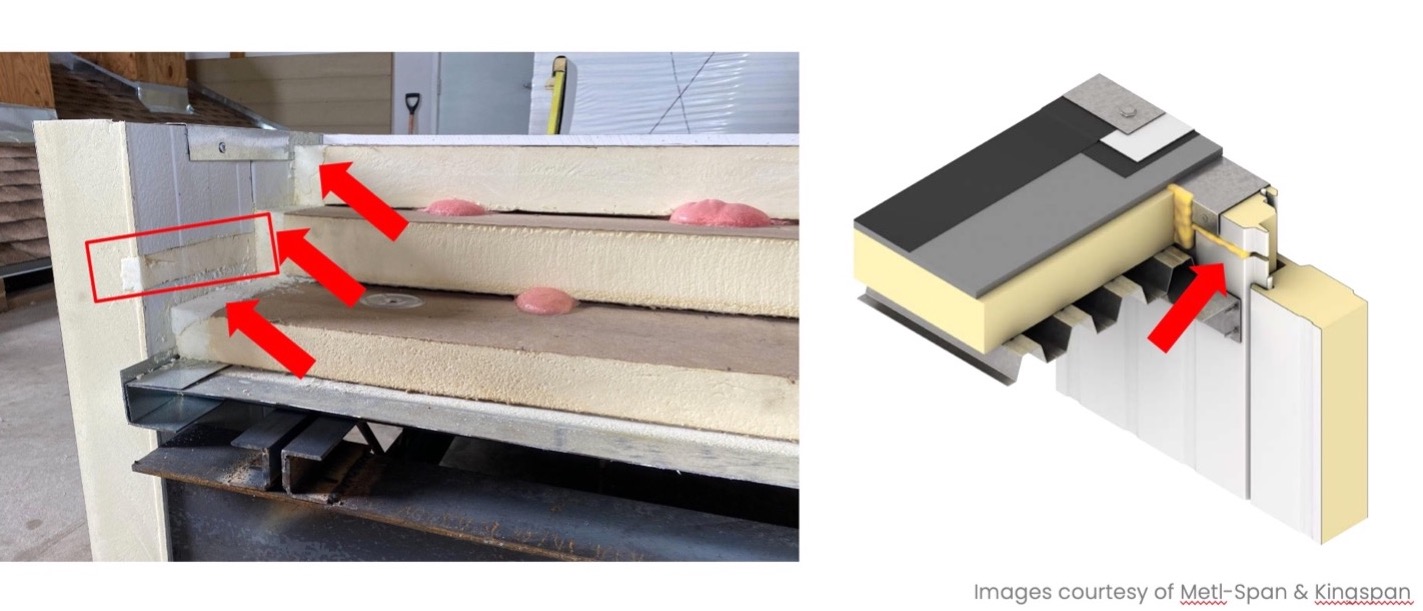
Thermal break, or kerf, cut into the metal panel, prior to the installation of spray foam.
This allows for foam-to-foam contact and decreases the potential for air to move throughout this intersection of the roof and wall materials. Then, the gap between the rigid insulation and the IMP should be filled with closed-cell spray foam. The rigid insulation should be held back a minimum of 1-inch from the face of the IMP and for the height of the insulation; the gap should be filled with closed-cell spray foam. The spray foam should be allowed to rise and cure and then cut flush with the surrounding insulation boards to create the airtight seal at this location.
Furthermore, the interface between the roof and IMP must be sealed on the exterior side as well. An air seal on the outer and inner surfaces—effectively a double air seal—is an excellent way to block air exfiltration and infiltration. If these interfaces are not air sealed, they can allow airflow, and the moisture contained within, to bypass the air-control layer and enter the building and condense. To create an effective outer air seal, the roof membrane should extend over the exterior face of the IMP and terminate on the outer edge. Similar to the interior face, the exterior face of the IMP is likely to be corrugated, which can create channels for air to travel into the roof assembly. It is a best practice to install a sealant in the low flutes of the corrugations to create a flat surface to terminate the roof membrane. Additionally, if a termination bar is used, sealant or butyl tape should be installed behind the termination bar to further prevent airflow from traveling into the roof assembly.
Section 5: Avoiding Common Installation Mistakes
A high-performing, efficient cold storage roof must do many things at once—it must successfully combat risks associated with temperature and thermodynamics, moisture infiltration, vapor control, and air transport. Unfortunately, because the roof has so many roles to play, mistakes are costly and detrimental to building performance. To ensure that selected materials are installed correctly, only properly trained and professionally equipped roofing contractors experienced in the installation of the selected roofing applications should install these systems over cold storage buildings. The coordination and cooperation of the designer, roofing contractor, and other relevant contractors contribute to a successful installation.
As building science profoundly demonstrates, problems occur when there are paths for air and water vapor movement within the building envelope. It is imperative that the vapor retarder and roof system be continuous, tied to the wall air barrier, and completely sealed at roof penetrations, the roof to wall interface, and other material intersections. It is also highly advisable to limit the number of penetrations through the roof assembly.
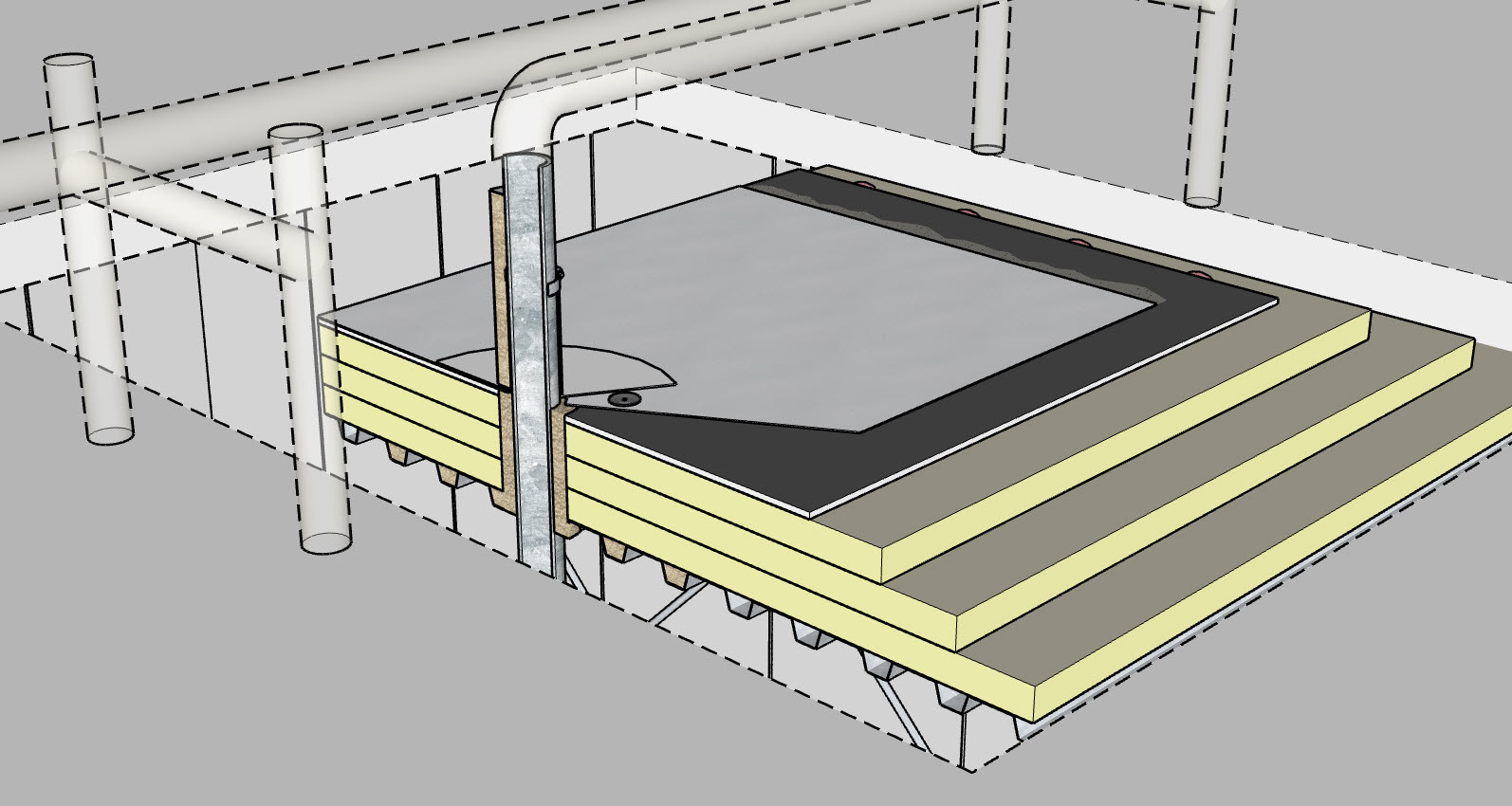
Areas of penetration, like pipes, are areas of concern for air leakage, thermal loss, and condensation.









